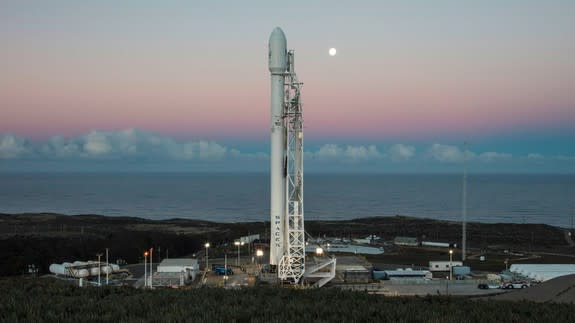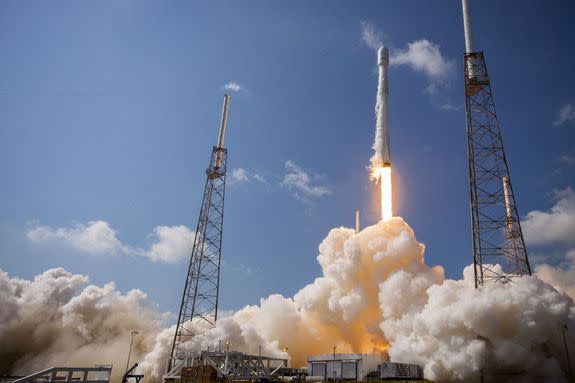SpaceX's Saturday rocket launch is a big freaking deal

It's make or break time for SpaceX.
The Elon Musk-founded spaceflight company is planning to launch a clutch of communications satellites to orbit aboard a Falcon 9 rocket on Saturday. This is the company's first launch since a Falcon 9 blew up on its pad during what should have been a routine test five months ago.
SEE ALSO: Elon Musk's SpaceX absolutely needs its satellite internet business to work
The September explosion grounded the company's rockets and hit its bottom line, forcing SpaceX's aggressive launch schedule to be pushed back. Musk called the investigation the "most difficult and complex failure" in SpaceX's 14-year history.
The company, with the help of multiple government agencies, got to the bottom of the issue that caused the explosion and was given permission to launch again for the first time since September.

Image: spacex
With Saturday's launch, SpaceX effectively needs to prove that it can do what it does again — successfully launch payloads into orbit while making inroads in making its vision of reusable rocket stages a reality.
"Simply enough, SpaceX will be helped by just having a successful launch with no problems," Bill Ostrove, an aerospace and defense industry analyst at Forecast International, told Mashable via email.
"That will go a long way towards proving themselves again. The more launches in a row they can get without a problem the better," he said.
Also, the rocket literally has a lot riding on it.
This Falcon 9, which is expected to launch from California's Vandenberg Air Force Base at , is carrying a grand total of 10 communications satellites to orbit for the company Iridium.
You can watch the live webcast from SpaceX starting at 12:34 p.m. ET in the window below:
Landing attempt
In addition to launching the satellites into orbit, SpaceX is also planning one of its signature vertical rocket landings on a drone ship in the ocean.
After launching the satellites on their way, the first stage of the Falcon 9 will turn around and come back down to Earth, hopefully landing on the company's drone ship in the Pacific Ocean.
If all goes according to plan, that landing should also be webcast in the window above. (Occasionally, the video feeds from the drone ship can cut out due to weather conditions.)
Before the accident in September, the company was really starting to get the hang of these complicated rocket maneuvers.
What a landing. @SpaceX pic.twitter.com/YTfCRHaC8w
— Mashable News (@MashableNews) December 22, 2015
In total, SpaceX has successfully returned six boosters back to Earth after launching various satellites and other craft to space for customers like NASA and private satellite companies such as Iridium.
These aren't just stunts, however. SpaceX eventually wants to re-launch these landed rocket stages in order to drastically reduce the cost of building rockets and sending them to space.
Traditional rockets are used once and then discarded into space after launch, but if SpaceX has its way, the company will be able to launch multiple missions using their landed rockets.

